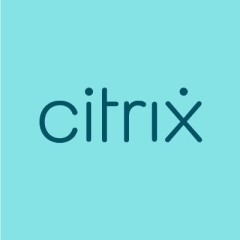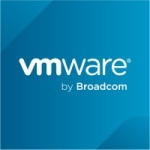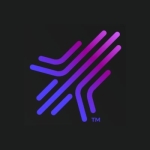We use application virtualization capabilities and on-premise desktop virtualization. In one of the companies, we are using remote PC access or remote access to physical desktops. We used cloud-hosted desktop virtualization for a PoC.
Our organization has over 15 companies all over the eastern region. We are in manufacturing, distribution, technology, and many more things.
It provides the flexibility of being used on any device. It is good in terms of user experience. Generally, if you want to run an application over the internet on your virtual desktop, you need to have many things working well to have the same experience that you will have if you were are working on your own laptop. It provides a good user experience in terms of working even with not-so-high bandwidth.
There is end-to-end security not only for the application itself but also for the users. We need to ensure that the applications are always protected and the connection between the user and the application is also protected.
Integration with the cloud provides a seamless experience. You can publish applications over the cloud, and you can access the workspace and your application on your computer, your laptop, your tab or iPad, or on mobile devices. It works well with your Apple, Android, or Windows devices. It works with everything. There is also a system where you can remotely assist any person who is running any specific application.
There is good integration between Citrix and Microsoft applications. You can also optimize the user experience with certain configurations. Security plays a very important role in working with Citrix in terms of dealing with group policies, legal policies, and application policies. You can apply the required policies. For example, you can have a clipboard policy where people cannot copy or screenshot stuff.
It is very easy when it comes to the deployment and management of hybrid cloud apps and desktops. You are working only in one console, and it is straightforward. You can see everything there. You can see the policies, rules, profiles, and whether you want to have it on the cloud or on-prem.
When it comes to the security and protection of critical business applications and desktops,
there are certain business applications that some companies prefer not to publish or not to have on virtual desktops in the cloud. However, when we're talking on-premises solution, it can integrate with any published application. If you're working on certain projects or certain versions, you will not have any issues in terms of the version because the configuration is based on the server and not on the client PC. For example, some Oracle application or ERP application needs certain plugins to be available, and users didn't have those on their laptops. In spite of not having them, they were able to work on these applications through a virtual desktop.
It simplifies adherence to industry regulations for data protection and compliance with all kinds of security policies.
It benefits the overall business operation and reduces the total time of managing big applications. The applications are available at any time of the day. Previously, if anyone lost his computer or had his computer damaged or something like that, we had to take that computer and reinstall everything for a staff member to be able to access the application, whereas now, the staff member can access the application through his phone or another computer. His information is there on the service from any place. So, it impacts the availability of applications, and it saves a lot of time to replace a damaged PC. In certain cases, it also saves a lot of cost of buying new Windows or new hardware for the applications, so we can use old laptops to run these applications. It saves time and money.
It saves the cost of buying new PCs and the maintenance. It saves 50% to 60% of the total cost of a new device that needs to be bought for any new employee or for a specific service. It saves a lot of money and reduces wastage.
It provides security of our intellectual property and data when remote employees are using the solution. The main thing is that you can create your own policies and you can specify what applications users can run based on the locations. For example, if they are working in Dubai, they don't need to access all data in Lebanon. We can create profiles and policies for them. In the group configuration, you can just integrate it with Active Directory or another security platform so that the configuration can be applied to the region.
It is very efficient to work with a thin client. There are no problems with integration with various devices.
We're running it on-prem. We are working with Hyper-V and vSphere, and we don't have any problem with that. We can run any server and storage. It can work with any hypervisor. There are no restrictions.
First of all, the manageability of the applications for publishing is valuable. Second, it is about being able to run the applications on all main platforms. Third, its licensing is valuable. You can either switch to the cloud and keep on-prem. You can work with this hybrid scenario.
As an admin, for managing the devices, the interface is very user-friendly. There is no problem, and it is very good.
Licensing service installation and configuration was the biggest challenge for all Citrix solutions, but now they have fixed a lot of issues.
I have been using this solution since 2013.
We have companies that have around 500 users, 100 users, and 50 users. The biggest company has around 1,000 users. This company is all across the region.
We will increase its usage depending on the business and the requirements.
They were excellent from a project management standpoint. They helped us with issues related to licensing.
If we need any online support, they are able to provide that. Their support is fine.
I used to work with VMware Horizon.
It didn't take a lot of time. Within a week of entering into an agreement with Citrix to use their service, I was able to administer and work with it.
We had everything that we need, and their support team in Lebanon was very helpful. In less than a week, we were able to administer and install applications. At the initial stage, we also had to develop our own profiles and policies, but it was very straightforward. There was no complexity. It took around two hours for installing the Citrix and the license service, and it took around two days to configure the profiles. We had three people for deployment.
You can buy an on-cloud or on-prem license. You can switch between on-cloud users and on-prem users.
Its licensing is cheap. It is from $8 to $15 per user. It is not that expensive when you compare the cost of buying new hardware with the cost of the license. For example, at $15 per user, it costs around $180 for a year, which is cheaper than buying a $600 PC that at a certain stage, you will again have to change because its hardware is not supported. It may also get damaged or stolen. So, you can compare the cost of the actual hardware that you have to buy and the time spent in supporting the clients with the cost of its license.
I evaluated other solutions such as VMware Horizon and Microsoft Remote Desktop Services. Citrix works seamlessly on different platforms, and its bandwidth consumption is very low. Desktop profiles, integrations, and remote assistance were also the main factors for going for Citrix.
To get the benefit of the return on investment, you need to plan well in advance when to change all of the laptops, and you also need to train the users to cope with the new environment or new structure.
I would rate this solution a nine out of 10.

















